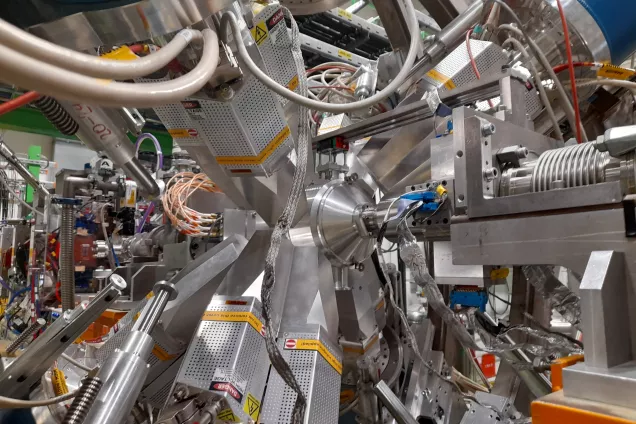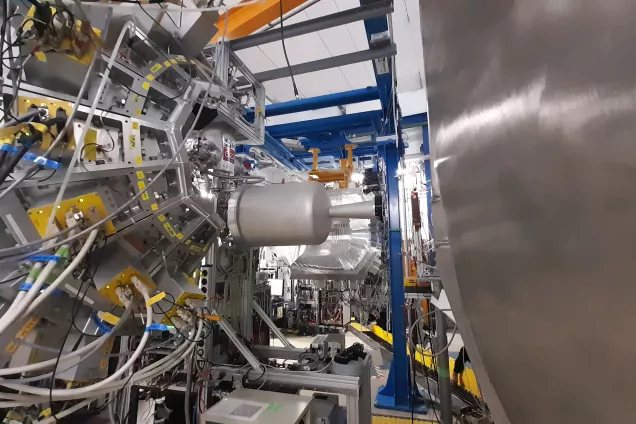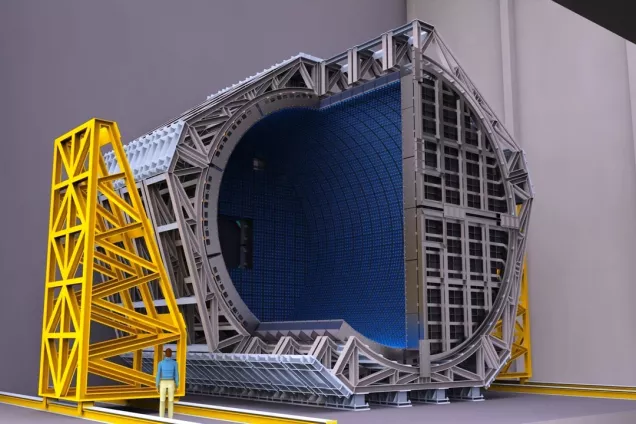Nuclear Astrophysics & Reactions
We study exotic atomic nuclei that are of interest in pure nuclear physics, nuclear astrophysics and fundamental physics, mainly in international collaborations using large scale infrastructures. We also develop instrumentation and analysis methods as part of the research program.
Nuclear Physics with Radioactive Ion Beams
Our experiments are mainly carried out at the ISOLDE radioactive beam facility at CERN, and within the Relativistic Radioactive Beam (R3B) experiment at FAIR/GSI. We are also involved in planning for a new fundamental physics program at ESS, where we e.g. investigate the feasibility of a coherent elastic neutrino scattering experiment (CEvNS), measurements of neutrino-nucleus cross sections, as well as a long-baseline neutrino oscillation experiment (ESSnuSB).
Reaction studies using radioactive atomic nuclei play a central role in modern nuclear physics. Although the matter around us consists of stable atomic nuclei, many of them were created in processes that involve unstable intermediate reaction products. We know that the lightest elements were produced in the Big Bang, and that heavier atomic nuclei are produced in reactions in stars and potentially also in neutron star mergers. To understand these processes requires knowledge of the properties of unstable atomic nuclei far from stability, e.g. their internal structure, decay modes and reaction rates. In this way modelling and understanding exotic atomic nuclei is tied with our understanding how the matter that surrounds us came into being.
From theoretical models we know that there should be ca 7000 particle stable, but beta-decaying, isotopes between the drip lines, beyond which the strong force in the nucleus is not strong enough to bind additional neutrons or protons together. The stable isotopes, on the other hand, are ca 250. Consequently, to understand the processes that led to the creation of the matter that we see today, it is necessary to go beyond reactions involving the smaller number of stable isotopes and to see to what extent we can describe exotic systems with current models, or not. Experiments of this kind have been very difficult to carry out in the past.
There has, however, been a significant development in experimental techniques and instrumentation during the past few years and a number of new experiment facilities have been constructed, or are under construction, for the production of beams of short lived unstable isotopes. Our group is active in two of these, the ISOLDE experiment at CERN, Switzerland,and the R3B experiment at FAIR, which is under construction in Germany.
The exploratory work we do for a future fundamental physics program at ESS focusses on neutrino physics, where the primary aim is to utilize the fact that once ESS reaches its nominal design power it will be the primary high-intensity proton accelerator in the world and as a side effect of the neutron production also produce a copious amount of neutrinos at low-energy that can be used for a very competitive physics program while being minimally invasive for the facility and draw a relatively modest cost.
More information can be found by following the links on the right hand side of the page.




